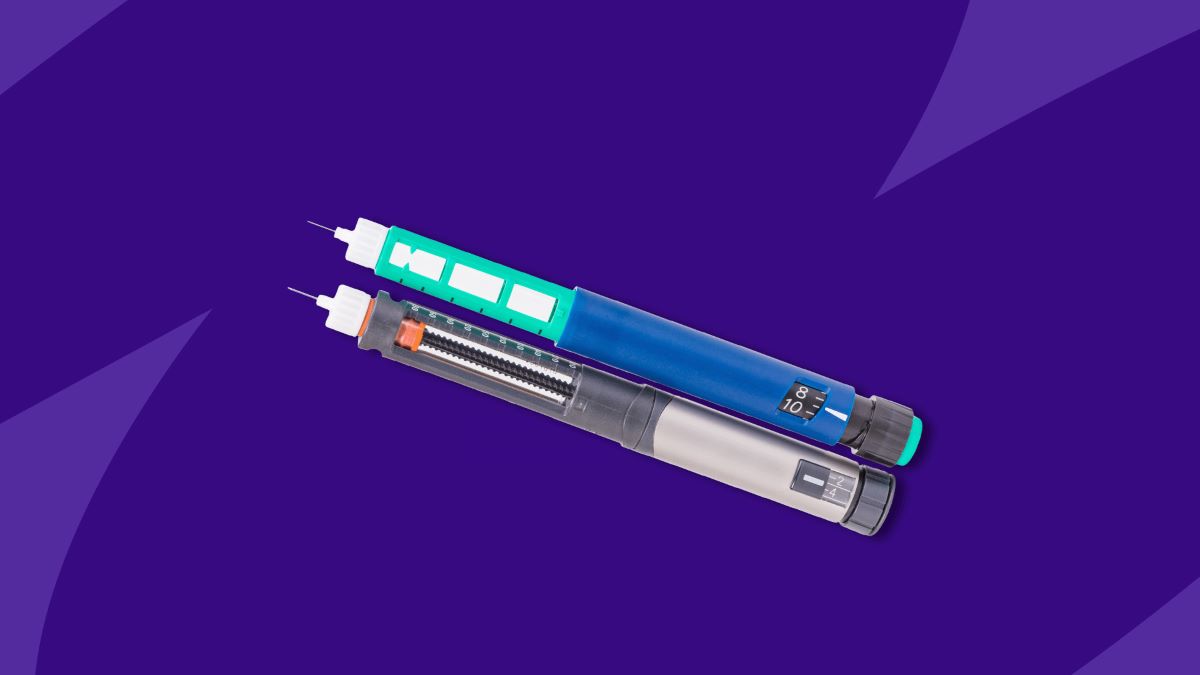

Finance
How To Get TRT Covered By Insurance
Published: November 22, 2023
Learn how to finance your TRT treatment and get it covered by insurance. Our expert guide will show you the steps to take for insurance approval.
(Many of the links in this article redirect to a specific reviewed product. Your purchase of these products through affiliate links helps to generate commission for LiveWell, at no extra cost. Learn more)
Table of Contents
- Introduction
- Understanding TRT (Testosterone Replacement Therapy)
- Why Insurance Coverage is Important
- Steps to Get TRT Covered by Insurance
- Research your insurance policy
- Determine medical necessity
- Get a referral from your primary care physician
- Find a TRT specialist
- Submit a pre-authorization request
- Provide supporting documentation
- Follow up with insurance company
- Appeal denials if necessary
- Conclusion
Introduction
Welcome to the world of testosterone replacement therapy (TRT)! If you’re someone who is dealing with low testosterone levels and considering TRT, you may have come across the question of insurance coverage. The cost of TRT can vary significantly, depending on factors such as medication, dosage, and administration method. Having insurance coverage for TRT can make a substantial difference in the affordability and accessibility of this treatment.
In this article, we will walk you through the process of getting your TRT covered by insurance. We will explore the steps you need to take, the documentation required, and offer tips on how to navigate the insurance system effectively. By following these steps, you can increase your chances of having your TRT treatment covered, minimizing your out-of-pocket expenses.
Before we delve into the intricacies of insurance coverage for TRT, let’s briefly understand what TRT entails. Testosterone replacement therapy is a medical treatment that aims to restore testosterone levels in individuals with low testosterone. Low testosterone is a condition that can lead to various symptoms such as fatigue, decreased libido, mood changes, and reduced muscle mass.
TRT involves the administration of exogenous testosterone, either through injections, patches, gels, or pellets. It helps to bring testosterone levels back to the normal range, alleviating the symptoms associated with low testosterone and improving overall quality of life.
Insurance coverage for TRT is crucial because it can significantly offset the financial burden associated with this treatment. While insurance coverage can vary from one plan to another, understanding the necessary steps and requirements will help you navigate the process more effectively. Let’s explore the steps you can take to get your TRT covered by insurance.
Understanding TRT (Testosterone Replacement Therapy)
Before diving into the steps to get your TRT covered by insurance, it’s important to have a solid understanding of what testosterone replacement therapy entails. TRT is a medical treatment that involves the administration of exogenous testosterone to individuals with low testosterone levels.
Low testosterone, also known as hypogonadism, is a condition that affects both men and women. In men, it is more commonly referred to as “Low T.” Testosterone plays a crucial role in various bodily functions, including muscle development, bone density, libido, mood regulation, and energy levels. When testosterone levels drop below the normal range, it can lead to a range of symptoms such as fatigue, decreased sex drive, mood swings, and reduced muscle mass.
TRT aims to restore testosterone levels to the optimal range, alleviating the symptoms of low testosterone and improving overall well-being. The treatment involves the administration of testosterone through various methods, including injections, patches, gels, or pellets.
Here are some common methods of TRT:
- Injections: Testosterone injections are typically administered every one to two weeks. The hormone is injected directly into the muscle, allowing for a slow release into the bloodstream.
- Patches: Testosterone patches are applied to the skin, typically on the upper body, back, or arms. They release a steady dose of testosterone throughout the day.
- Gels: Testosterone gels are applied topically to the skin, usually on the shoulders, upper arms, or abdomen. The gel is absorbed through the skin and into the bloodstream.
- Pellets: Testosterone pellets are small, implantable cylinders that are inserted under the skin, typically in the buttocks. They slowly release testosterone over several months.
TRT is not a one-size-fits-all treatment. The specific method and dosage of TRT will depend on individual needs, preferences, and the recommendation of healthcare professionals. It’s important to work closely with a healthcare provider experienced in hormone replacement therapy to determine the most suitable approach for your specific case.
Now that we have a better understanding of TRT, let’s explore why insurance coverage is essential when considering this treatment option.
Why Insurance Coverage is Important
Insurance coverage plays a vital role in making testosterone replacement therapy (TRT) more accessible and affordable for individuals dealing with low testosterone levels. Here are a few reasons why insurance coverage for TRT is important:
- Financial Relief: TRT can be a long-term treatment, requiring ongoing medication and monitoring. Without insurance coverage, the cost of TRT can quickly add up. Having insurance coverage helps to alleviate the financial burden, making the treatment more feasible and sustainable for individuals.
- Increased Accessibility: Insurance coverage ensures that TRT is accessible to a broader population. It allows individuals with low testosterone to receive the necessary treatment without being limited by financial constraints. This is particularly important for those who would otherwise not be able to afford the treatment out-of-pocket.
- Quality of Care: Insurance coverage often comes with the added benefit of access to a network of healthcare providers who specialize in hormone replacement therapy. This ensures that individuals receive the highest quality of care and have access to the expertise of professionals experienced in TRT.
- Monitoring and Support: Insurance coverage often includes regular monitoring and follow-up appointments with healthcare providers. This allows for ongoing assessment of the effectiveness of the treatment and necessary adjustments to the dosage or administration method. Regular check-ups and monitoring are essential to ensure optimal results and minimize any potential side effects.
- Peace of Mind: Knowing that TRT is covered by insurance provides peace of mind to individuals undergoing treatment. It eliminates the stress and worry associated with the financial burden of ongoing therapy, allowing individuals to focus on their health and well-being.
It is important to note that insurance coverage for TRT can vary depending on the insurance policy and provider. Some insurance plans may offer comprehensive coverage, while others may have more strict criteria for coverage. Understanding your insurance policy and the requirements for TRT coverage is crucial to navigate the process effectively.
In the following sections, we will outline the steps you can take to increase your chances of getting your TRT covered by insurance. By following these steps and being proactive in advocating for your health, you can work towards obtaining insurance coverage and making TRT a more affordable and accessible treatment option.
Steps to Get TRT Covered by Insurance
While the process of getting testosterone replacement therapy (TRT) covered by insurance may seem daunting, following the right steps can increase your chances of success. Here are the key steps you can take to navigate the insurance system and get your TRT covered:
- Research your insurance policy: Start by thoroughly reviewing your insurance policy. Understand the coverage details, including any specific requirements or limitations related to TRT. Familiarize yourself with the terms and conditions, as well as the procedures for submitting claims and pre-authorization requests.
- Determine medical necessity: TRT is typically covered by insurance when deemed medically necessary. Work with your healthcare provider to determine if TRT is appropriate for your specific condition and symptoms. Having a documented diagnosis and evidence of medical necessity will strengthen your case for insurance coverage.
- Get a referral from your primary care physician: In most cases, insurance providers require a referral from a primary care physician to authorize TRT treatment. Schedule an appointment with your primary care physician to discuss your symptoms and request a referral to a specialist in hormone replacement therapy.
- Find a TRT specialist: Identify a healthcare provider or specialist who has experience in prescribing and managing testosterone replacement therapy. Look for TRT specialists within your insurance network to ensure better coverage. Your primary care physician can help you find a suitable specialist or provide a referral.
- Submit a pre-authorization request: Once you have a referral and a TRT specialist, work with your healthcare provider’s office to submit a pre-authorization request to your insurance company. This request outlines the medical necessity of TRT and provides supporting documentation, such as lab results and medical records. Follow the specific guidelines and procedures provided by your insurance company for submitting the request.
- Provide supporting documentation: As part of the pre-authorization process, gather any necessary supporting documentation related to your low testosterone diagnosis and medical history. This may include blood test results, medical records, and any other relevant documentation that supports the medical necessity for TRT.
- Follow up with the insurance company: Keep track of the progress of your pre-authorization request and follow up with your insurance company if necessary. Stay in touch with your healthcare provider to ensure that any additional information or documentation requested by the insurance company is promptly provided.
- Appeal denials if necessary: In some cases, insurance companies may initially deny coverage for TRT. Don’t lose hope if this happens. Work with your healthcare provider to gather any additional supporting documentation or medical evidence to build a strong case for an appeal. Follow the insurance company’s appeals process and provide any requested information to support your appeal.
Remember, the specific steps and requirements may vary depending on your insurance provider and policy. It’s essential to closely follow their guidelines and procedures to increase your chances of getting your TRT covered. Be proactive, stay organized, and advocate for your health throughout the process.
To wrap up, obtaining insurance coverage for TRT can make a significant difference in the affordability and accessibility of the treatment. By taking the necessary steps and being prepared, you can increase your chances of getting your TRT covered by insurance, minimizing your out-of-pocket expenses and making the journey towards restoring your testosterone levels a smoother one.
Research your insurance policy
One of the crucial first steps in getting testosterone replacement therapy (TRT) covered by insurance is to thoroughly research your insurance policy. Understanding the details of your policy is essential for navigating the process effectively. Here’s how you can go about it:
- Policy Coverage: Start by reviewing the coverage section of your insurance policy. Look for information specifically related to TRT or hormone replacement therapy. Take note of any limitations, exclusions, or requirements stated in the policy. This will give you an overview of what to expect in terms of coverage for TRT.
- Insurance Provider Network: Determine whether your insurance policy includes a network of healthcare providers. Check if your preferred TRT specialist or healthcare provider is within the network. In-network providers are typically covered at a higher rate, reducing your out-of-pocket expenses.
- Pre-Authorization Process: Familiarize yourself with the pre-authorization process for TRT. Some insurance providers require pre-authorization before initiating treatment. Understand the specific requirements, documents, and forms needed for pre-authorization. This information will guide you in gathering the necessary documentation later in the process.
- Drug Formulary: Check the drug formulary of your insurance policy to determine which TRT medications are covered. Insurance companies often have a list of approved medications and may require specific products or generics to be used. Ensure that the medication your TRT specialist prescribes is covered by your insurance plan.
- Out-of-Pocket Costs: Review the section of your policy that explains your financial responsibility. Take note of the deductible, copayments, and coinsurance amounts applicable to TRT. Understanding these costs will help you budget and plan accordingly.
- Policy Limitations: Pay attention to any limitations or restrictions related to TRT. Some insurance policies may have limitations on the duration of treatment, dosage restrictions, or requirements for medical monitoring. Understanding these limitations will help you manage your expectations and work with your healthcare provider to comply with any necessary requirements.
Remember, insurance policies can be complex, so it’s essential to read through the entire document and take note of any relevant information related to TRT coverage. If you have any questions or need clarification, reach out to your insurance provider’s customer service for assistance.
By thoroughly researching your insurance policy, you will have a better understanding of what is covered and what steps to take next. Armed with this information, you’ll be well-prepared to proceed with the process of getting your TRT covered by insurance.
Determine medical necessity
Before proceeding with testosterone replacement therapy (TRT) and seeking insurance coverage, it is crucial to determine if TRT is medically necessary in your case. Establishing medical necessity involves assessing your symptoms, having a documented diagnosis, and working with your healthcare provider to determine if TRT is the appropriate course of treatment for you.
Here are the steps to determine medical necessity for TRT:
- Evaluate your symptoms: Take note of any symptoms you are experiencing, such as decreased libido, fatigue, mood swings, or muscle loss. These symptoms may be indicators of low testosterone levels. Keep a record of your symptoms, their severity, and how they impact your daily life.
- Consult with your healthcare provider: Schedule an appointment with your primary care physician or a specialist experienced in hormone replacement therapy. Discuss your symptoms and concerns with them. They will evaluate your medical history, perform a physical examination, and may order blood tests to measure your testosterone levels.
- Review blood test results: Your healthcare provider will analyze the results of your blood tests to determine if your testosterone levels fall within the normal range. If your testosterone levels are significantly below the normal range and you are experiencing symptoms associated with low testosterone, it may be an indication of medical necessity for TRT.
- Consider underlying conditions: Your healthcare provider will also consider if there are any underlying conditions or factors that contribute to your low testosterone levels, such as hypogonadism or certain medical treatments. These factors can further support the case for medical necessity for TRT.
- Weigh the benefits and risks: Your healthcare provider will discuss the potential benefits and risks of TRT with you. They will consider your overall health, any existing medical conditions, and potential contraindications before recommending TRT. The decision to proceed with TRT as a treatment option will be based on a comprehensive evaluation of your specific situation.
It’s important to note that insurance coverage for TRT often depends on establishing medical necessity. Insurance companies typically require documented evidence of low testosterone levels and a corresponding clinical diagnosis to consider coverage. Working closely with your healthcare provider will ensure that you have the necessary documentation to support your case when seeking insurance coverage for TRT.
By determining medical necessity, you can confidently proceed with the next steps in the process of getting your TRT covered by insurance. Collaborate with your healthcare provider to gather the necessary documentation and move forward towards accessing the treatment that can help improve your quality of life.
Get a referral from your primary care physician
When considering testosterone replacement therapy (TRT) and seeking insurance coverage, it is often necessary to obtain a referral from your primary care physician (PCP) to a specialist in hormone replacement therapy. This referral serves as a recommendation for TRT and helps establish the medical necessity of the treatment. Here’s how you can successfully obtain a referral:
- Schedule an appointment: Contact your primary care physician’s office and schedule an appointment specifically for discussing your symptoms and the possibility of TRT. Be prepared to provide a detailed overview of your symptoms, including any changes in your energy levels, libido, mood, or muscle mass.
- Communicate openly: During your appointment, have an open and honest conversation with your PCP about your concerns, and explain why you believe TRT may be a suitable treatment option for you. Describe how your symptoms have been impacting your daily life and overall well-being.
- Discuss your research: Share any research or information you have gathered about TRT, insurance coverage, and the potential benefits of the treatment. This demonstrates your proactive approach and commitment to finding a suitable solution for your health concerns.
- Request a referral: Politely ask your PCP to provide a referral to a specialist who has experience with hormone replacement therapy and TRT. If possible, share the name of the specialist you have researched or ask for recommendations based on their professional network.
- Be prepared for questions: Your PCP may ask further questions to better understand your symptoms and medical history. They may want to review any recent blood test results or discuss other potential causes for your symptoms. Be open and provide any requested information to help them make an informed decision regarding your referral.
Remember that the referral from your PCP is important for insurance purposes. Insurance providers often require a referral before approving TRT coverage. By obtaining a referral from your trusted PCP, you demonstrate that your symptoms have been evaluated by a primary care provider and deemed appropriate for further evaluation and treatment by a specialist.
If your PCP seems hesitant to provide a referral or suggests alternative treatments, such as lifestyle changes or further testing, listen to their perspective and ask them to specifically document their reasoning in your medical records. You can then discuss your options and the possibility of a referral with another healthcare provider if necessary.
Getting a referral from your PCP helps establish a solid foundation for pursuing TRT treatment and seeking insurance coverage. It demonstrates that you have followed the appropriate steps in the healthcare system and are moving forward with the support of your primary care physician.
Find a TRT specialist
After obtaining a referral from your primary care physician (PCP), the next step in getting testosterone replacement therapy (TRT) covered by insurance is to find a trusted specialist who specializes in hormone replacement therapy. Here are some tips to help you find a qualified TRT specialist:
- Utilize insurance resources: Check if your insurance provider has a directory or online tool that allows you to search for healthcare providers within their network. Look for specialists who have experience and expertise in hormone replacement therapy or specifically mention TRT in their profile.
- Ask for recommendations: Reach out to friends, family members, or colleagues who may have undergone TRT or have experience in the field of endocrinology. They may be able to provide recommendations for trusted TRT specialists they have consulted in the past.
- Research online: Conduct online research to find TRT specialists in your area. Check for patient reviews and testimonials to get an idea of their reputation and patient satisfaction. Visit their websites or online profiles to gather further information about their experience, qualifications, and areas of expertise.
- Check professional associations: Look for TRT specialists who are members of professional organizations such as the American Association of Clinical Endocrinologists (AACE) or the American Urological Association (AUA). These organizations typically have directories or referral resources that can help you find qualified specialists in your area.
- Consult with your PCP: Your PCP can offer valuable insights and recommendations based on their professional network. If they haven’t provided a specific referral, ask if they can suggest a trusted TRT specialist or consult with their colleagues for further guidance.
When evaluating potential TRT specialists, consider factors such as their experience, qualifications, and the convenience of their location and office hours. The goal is to find a specialist who not only has the necessary expertise but also makes you feel comfortable and confident in their care.
Once you have identified a potential TRT specialist, contact their office to inquire about their acceptance of your insurance and whether they have any specific requirements or processes for new patients. Verify that they will work closely with you and your insurance provider to navigate the insurance coverage process for TRT.
Remember, finding a skilled TRT specialist is crucial for receiving appropriate and personalized care throughout your treatment journey. By investing time and effort in finding the right specialist, you can enhance your chances of a successful TRT experience and insurance coverage.
Submit a pre-authorization request
Once you have selected a TRT specialist and are ready to move forward with testosterone replacement therapy (TRT), the next step in getting your treatment covered by insurance is to submit a pre-authorization request to your insurance company. A pre-authorization request is a formal request sent by your healthcare provider to seek approval for coverage of your TRT treatment. Here’s how you can effectively submit a pre-authorization request:
- Gather necessary documentation: Work closely with your TRT specialist’s office to compile all the necessary documentation required for the pre-authorization request. This typically includes your medical records, lab results, a letter of medical necessity from your specialist, and any other supporting documents that validate the need for TRT.
- Review your insurance policy: Familiarize yourself with your insurance policy’s specific guidelines and requirements for submitting a pre-authorization request. Pay attention to any deadlines, specific forms, or supporting documents that are requested by your insurance provider. This will ensure that you meet all the necessary criteria for a successful pre-authorization request.
- Complete the pre-authorization form: Fill out the pre-authorization form provided by your insurance company accurately and thoroughly. Be prepared to provide details about your diagnosis, treatment plan, and any previous attempts at alternative treatments. Your TRT specialist’s office should assist you in completing this form accurately.
- Include supporting documentation: Attach all the necessary supporting documentation to your pre-authorization request. This may include medical records, lab results, letters of medical necessity, and any other relevant documents that strengthen your case for TRT coverage. Ensure that all documents are accurate, complete, and legible.
- Submit the pre-authorization request: Once all the required forms and supporting documentation are in order, submit the pre-authorization request to your insurance company. Confirm the preferred method of submission, whether it’s through an online portal, fax, or mail. Keep copies of all submitted documents for your records.
After submitting the pre-authorization request, it’s important to keep track of the progress. Note the date of submission, and follow up with your insurance company to ensure that your request is being processed. Maintain open lines of communication with your TRT specialist’s office to address any additional information or documentation requests from the insurance company promptly.
It’s essential to be patient during this process, as pre-authorization requests can take time to be reviewed and approved. If you encounter any hurdles or issues, don’t hesitate to contact your insurance provider’s customer service for assistance or clarification.
Submitting a thorough and well-documented pre-authorization request increases your chances of getting TRT covered by insurance. By closely following the guidelines provided by your insurance company and collaborating with your TRT specialist’s office, you can navigate the pre-authorization process more effectively and move closer to accessing the treatment you need.
Provide supporting documentation
When submitting a pre-authorization request for testosterone replacement therapy (TRT) coverage, providing comprehensive and accurate supporting documentation is crucial. Supporting documentation helps validate the medical necessity of TRT and strengthens your case for insurance coverage. Here’s what you need to know about submitting supporting documentation:
- Medical records: Include relevant medical records that document your low testosterone diagnosis and history. This may include notes from previous appointments, specialist consultations, or relevant hospital records. These records provide a comprehensive view of your medical history and demonstrate the need for TRT.
- Lab results: Include recent blood test results that indicate low testosterone levels. Testosterone level measurements, along with other related hormone levels, can help substantiate the necessity for TRT. Provide copies of lab reports that clearly indicate your hormone levels and the ranges considered normal.
- Letter of medical necessity: Your TRT specialist can write a letter of medical necessity that explains the reasons for TRT and its impact on your overall health and well-being. The letter should outline specific symptoms, previous treatments attempted, and the benefits that TRT can provide in addressing your unique situation.
- Detailed treatment plan: Outline a detailed treatment plan provided by your TRT specialist. Include the proposed method of administration (injections, patches, gels, or pellets), dosage recommendations, and the anticipated frequency of treatment. This treatment plan shows that your TRT is carefully thought out and tailored to your individual needs.
- Alternative treatment history: If you have previously attempted alternative treatments for low testosterone, provide documentation of these attempts. This can include records of medication trials, lifestyle modifications, or other interventions that were unsuccessful in raising your testosterone levels. Highlighting these efforts strengthens the case for TRT as a necessary treatment option.
Ensure that all supporting documentation is legible, accurate, and organized. If any supporting documents are in a language other than English, provide translated copies to facilitate the review process. Keeping copies of all submitted documents for your records is essential for easy reference and potential future appeals if necessary.
Work closely with your TRT specialist’s office to gather the required documentation and to ensure that all necessary information is included. They have experience in dealing with insurance companies and can provide guidance on the specific documents needed to support your case for TRT coverage.
Remember, the goal of submitting supporting documentation is to provide a clear and comprehensive representation of your medical condition and the need for TRT. By providing strong supporting evidence, you increase the likelihood of receiving insurance coverage for your TRT treatment.
Follow up with insurance company
After submitting your pre-authorization request for testosterone replacement therapy (TRT) coverage, it’s important to actively follow up with your insurance company to ensure the progress of your request. Following up helps you stay informed, address any questions or concerns, and ensure that your request is being properly reviewed. Here are some key steps to follow when following up with your insurance company:
- Note submission date: Make a record of the date when you submitted your pre-authorization request. This will serve as a reference point for future follow-ups. Keep a copy of any confirmation or acknowledgment you receive from the insurance company.
- Determine the review timeline: Check with your insurance company to understand the standard timeline for reviewing pre-authorization requests. This information will give you an idea of when you can expect to hear back regarding the status of your request.
- Regularly inquire about the progress: Initiate contact with your insurance company to inquire about the progress of your pre-authorization request. Be polite and provide the necessary details, such as your name, policy number, and reference number for the request. Ask for an update on the status and if any additional documentation or information is needed.
- Keep records of conversations: During any communication with the insurance company, take notes of the date, time, and the name of the representative you spoke with. Document the details of the conversation, including any instructions or information provided. These records can be valuable if you need to refer back to specific discussions or if there are any discrepancies or misunderstandings.
- Follow instructions promptly: If the insurance company requests additional documentation or information, make sure to provide it as soon as possible. Follow their instructions carefully and keep records of the documents you submit.
- Clarify any issues or denials: If you receive a denial or encounter any issues with your pre-authorization request, seek clarification from the insurance company. Request a detailed explanation of the denial reason and inquire about the appeals process, if applicable. Sometimes, issues can be resolved through clear communication or the submission of additional supporting documents.
Remember to remain patient and persistent throughout the follow-up process. Insurance companies may have different workflows and timelines for reviewing pre-authorization requests. Stay proactive in checking on the progress and advocate for yourself if there are any delays or concerns.
Communicate closely with your TRT specialist’s office throughout the follow-up process. They may be able to offer guidance or support in interactions with the insurance company. Collaborating with your healthcare provider ensures that everyone is aligned and working towards securing the TRT coverage you need.
By actively following up with your insurance company, you can stay informed and address any issues or questions promptly. This helps to move the pre-authorization process forward, increasing your chances of obtaining the insurance coverage you need for your TRT treatment.
Appeal denials if necessary
If your pre-authorization request for testosterone replacement therapy (TRT) coverage is denied by your insurance company, don’t lose hope. You have the option to appeal the denial and provide additional information or documentation to support your case. It’s important to follow the appeals process outlined by your insurance company. Here’s how to navigate the appeals process:
- Review the denial letter: Carefully read the denial letter from your insurance company. Understand the specific reason for the denial and any requirements or deadlines for submitting an appeal. This information will help you craft a targeted response.
- Contact your TRT specialist: Consult with your TRT specialist or healthcare provider to discuss the denial. They can provide insights and guidance based on their experience in dealing with insurance companies. They may be able to offer additional supporting documentation or a different approach to strengthen your appeal.
- Prepare an appeal letter: Write a clear and concise appeal letter to the insurance company. Outline your reasons for appealing the denial, addressing each specific reason mentioned in the denial letter. Provide additional supporting documentation, such as test results, medical records, or expert opinions, to validate the medical necessity of TRT. Present your case in a factual and persuasive manner.
- Follow insurance company guidelines: Adhere to the appeals process outlined by your insurance company. Pay attention to any specific forms or documents they require for the appeal. Make sure to submit the appeal within the designated timeframe to avoid missed deadlines.
- Keep records of all communications: Document every step of the appeals process. Keep copies of all correspondence, including the appeal letter, any additional documents submitted, and any written or verbal communication with the insurance company. These records will be valuable for reference and future discussions.
- Consider getting assistance: If you encounter challenges or difficulties during the appeals process, consider seeking assistance from healthcare advocates or professionals who specialize in insurance appeals. They can provide guidance and strategies to navigate the process effectively and improve your chances of a successful appeal.
Be prepared for the possibility of multiple levels of appeals. Insurance companies often have an internal review process, where a different team or department re-evaluates the appeal. If the internal appeal is denied, you may have the option to pursue an external review or seek assistance from regulatory agencies, depending on your specific insurance plan and the laws of your region.
Although the appeals process may require patience and persistence, it can be worth the effort. Many individuals have successfully overturned denials and obtained the TRT coverage they need through the appeal process.
Remember to stay organized, thoroughly review the denial reasons, and provide compelling supporting documentation to strengthen your appeal. By asserting your case and advocating for your health, you increase the chances of getting your TRT covered by insurance.
Conclusion
Seeking insurance coverage for testosterone replacement therapy (TRT) can significantly alleviate the financial burden associated with this treatment and make it more accessible to individuals with low testosterone levels. By following the necessary steps and being proactive in advocating for your health, you can increase your chances of getting your TRT covered by insurance.
Begin by thoroughly researching your insurance policy to understand the coverage details, limitations, and requirements specific to TRT. Determine the medical necessity of TRT by evaluating your symptoms, consulting with your healthcare provider, and obtaining a referral from your primary care physician to a TRT specialist. Finding a trusted TRT specialist who has experience in hormone replacement therapy is key to receiving quality care and guidance throughout your treatment journey.
Submit a pre-authorization request to your insurance company by gathering the necessary supporting documentation, such as medical records, lab results, a letter of medical necessity, and a detailed treatment plan. Follow up with your insurance company regularly, keeping records of all communication, and addressing any additional requests promptly. If your pre-authorization request is denied, don’t lose hope – you have the option to appeal the denial by providing additional information and supporting documentation.
Through perseverance and effective communication, many individuals have successfully obtained insurance coverage for TRT through the appeals process.
Remember, obtaining insurance coverage for TRT can significantly improve the affordability and accessibility of this treatment. By following the steps outlined in this article and working closely with your healthcare provider, you can increase your chances of getting the TRT coverage you need. Prioritize your health, be proactive, and advocate for yourself throughout the process. With the right information and effort, you can pave the way towards a successful TRT experience.














